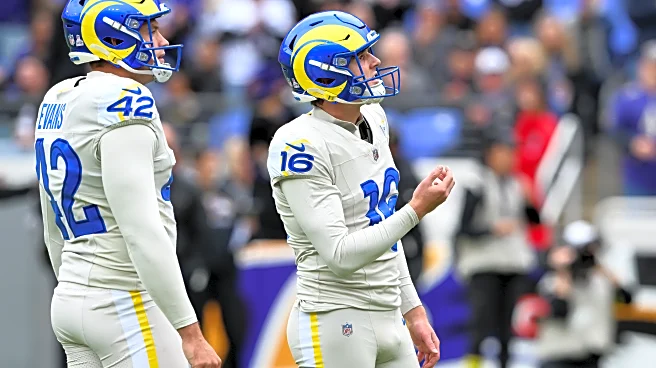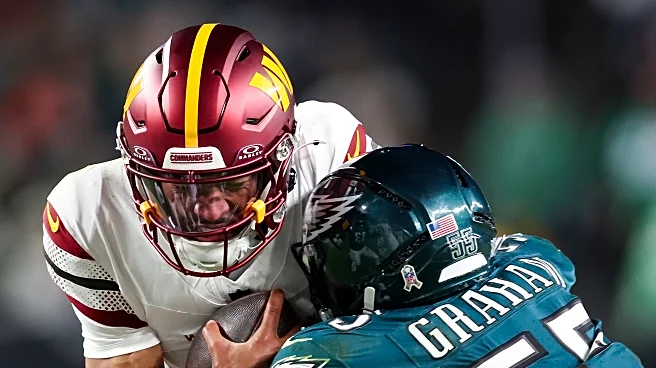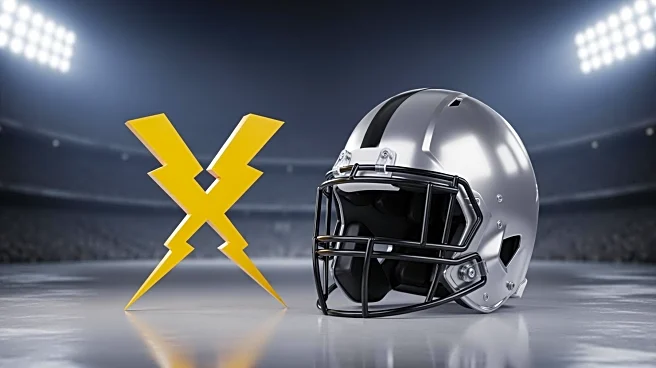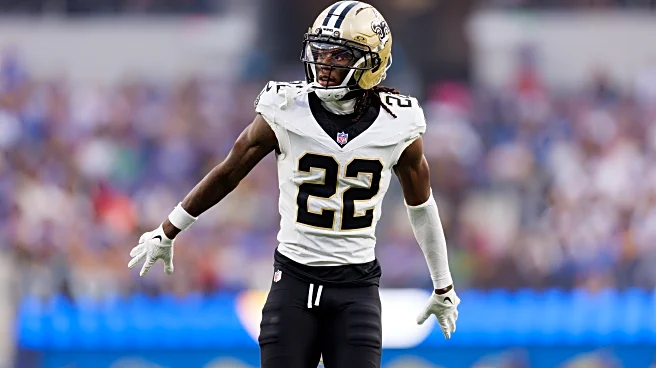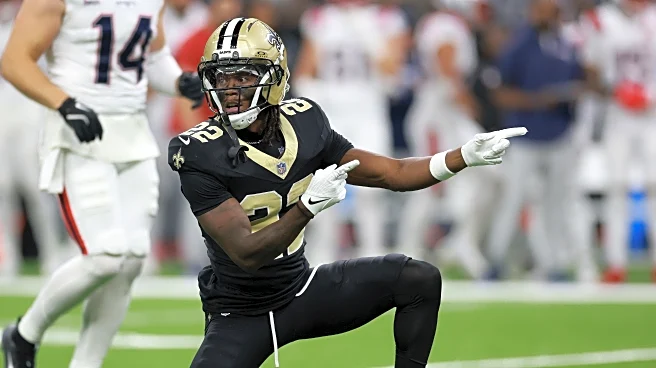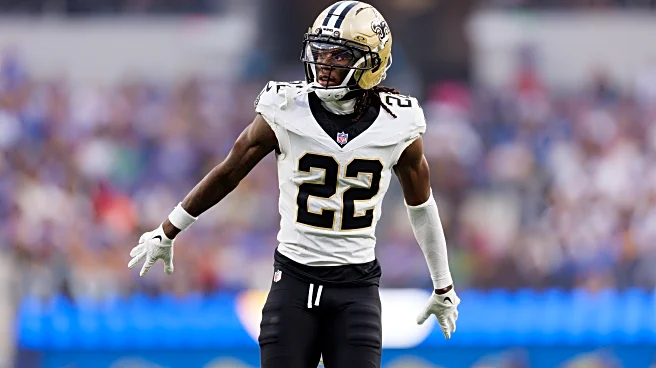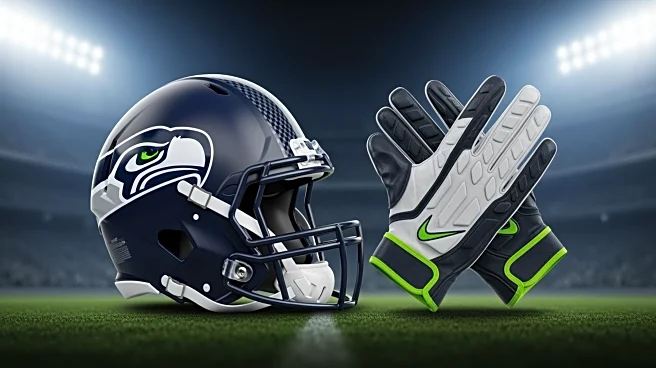What's Happening?
The New Orleans Saints have agreed to trade wide receiver Rashid Shaheed to the Seattle Seahawks in exchange for two draft picks in 2026. The Seahawks will send fourth and fifth-round picks to the Saints, who now hold seven picks in the 2026 draft, including
two fifth-round selections. The Saints had initially sought a third-round pick for Shaheed but settled for the additional picks, which provide them with more flexibility for future trades or roster improvements. Shaheed, who recorded 44 catches for 499 yards and two touchdowns in nine games, will join a rising NFC contender, while the Saints focus on rebuilding their team.
Why It's Important?
This trade reflects the Saints' strategic approach to rebuilding their roster by acquiring additional draft picks. The move allows the Saints to address multiple areas of need in the upcoming draft, potentially strengthening their team for future seasons. For the Seahawks, acquiring Shaheed adds depth to their receiving corps, enhancing their offensive capabilities as they aim for playoff contention. The trade also highlights the dynamic nature of NFL team management, where player trades are used to balance immediate needs with long-term strategic goals.
What's Next?
The Saints will likely use their increased draft capital to target key positions in the 2026 draft, aiming to build a more competitive team. The Seahawks will integrate Shaheed into their offensive strategy, potentially boosting their performance in the current season. Both teams will continue to monitor their roster needs and explore further trades or acquisitions as the season progresses. Analysts and fans will watch how Shaheed's performance impacts the Seahawks' playoff chances and how the Saints utilize their draft picks to improve their roster.
Beyond the Headlines
This trade underscores the importance of strategic planning in professional sports, where teams must balance immediate performance with long-term development. The Saints' decision to trade Shaheed for draft picks reflects a broader trend of teams prioritizing future potential over current assets. This approach may influence other teams to consider similar strategies, potentially leading to more trades focused on draft capital. Additionally, the trade highlights the role of player performance and market value in shaping team decisions.



